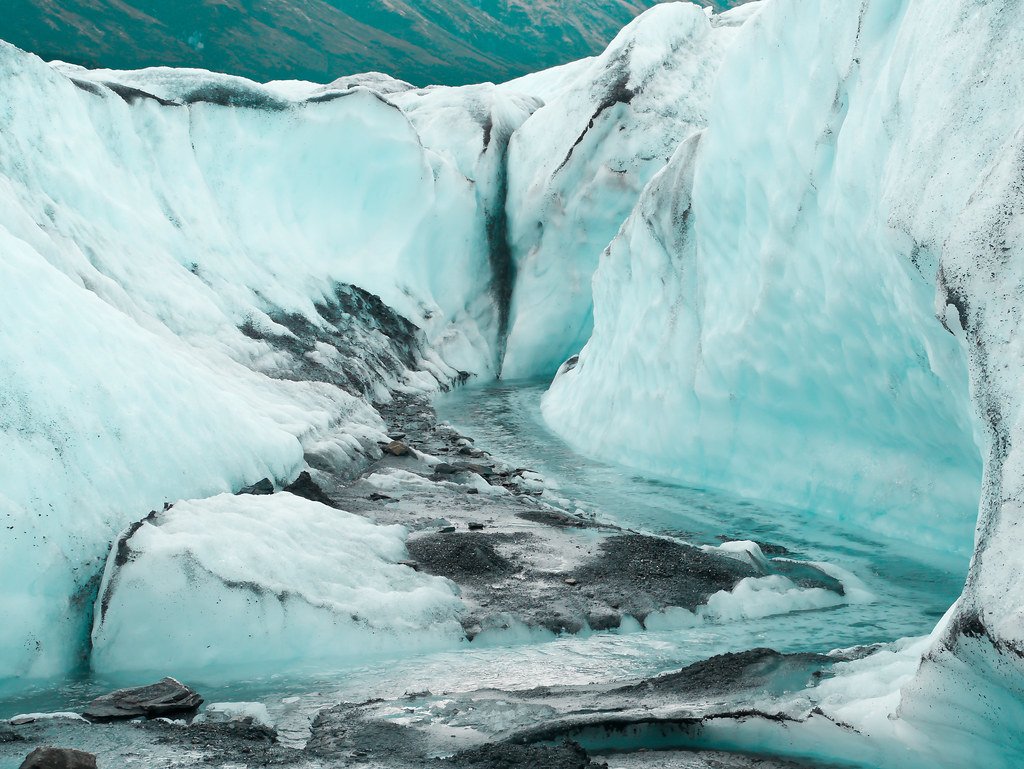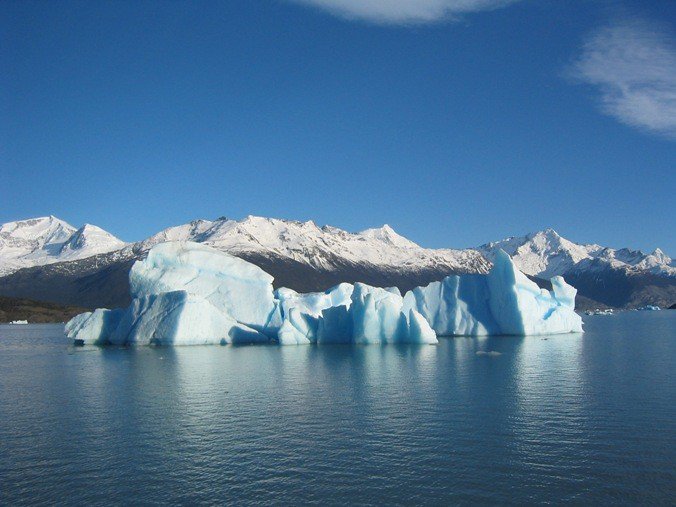Have you ever imagined what secrets lie locked in the heart of a glacier? Picture a vast, ancient river of ice, silent and stoic, yet teeming with invisible life and chemical mysteries. When glaciers begin to melt, something extraordinary happens—a phenomenon so unexpected it’s almost as if the glaciers themselves are taking a breath, exhaling strange gases and releasing hidden worlds. Beneath the blue-white surface, a wild chemical dance unfolds, shaping not just the fate of the ice, but also the air, water, and life around it. Step into the chilly unknown and discover what truly happens when glaciers breathe.
The Hidden Life Beneath the Surface
Deep inside glaciers, far from sunlight and warmth, life finds a way to survive. Microbes—some ancient, some newly discovered—live within pockets of liquid water and tiny air bubbles trapped in the ice. These microorganisms have adapted to extreme cold, using unconventional tricks to stay alive. They feed on minerals and organic matter frozen alongside them, sometimes for thousands of years. As the glacier melts, these hidden communities awaken, stirring up chemical reactions that would never happen in ordinary water. This underground ecosystem is not just a curiosity; it plays a quiet but vital role in shaping the chemistry of our planet.
The Science of “Glacial Breathing”
When glaciers begin to melt, they release gases that have been sealed inside for centuries. These gases—like methane, carbon dioxide, and even nitrous oxide—can dramatically impact the atmosphere. The process is almost like the glacier exhaling after holding its breath for thousands of years. As the ice softens and cracks, pockets of gas escape in tiny bursts, sometimes even bubbling up through the meltwater streams. This release isn’t just a chemical oddity; it adds to the global greenhouse gas mix, subtly influencing the Earth’s climate in ways scientists are only beginning to understand.
Trapped Air Bubbles: Time Capsules of the Past
Every glacier holds a treasure trove of ancient air in the form of microscopic bubbles. These bubbles are like tiny time machines, capturing the atmosphere from centuries ago. When researchers drill into glaciers and retrieve ice cores, they can analyze these bubbles to learn about the Earth’s past climate. What they find can be astonishing—evidence of volcanic eruptions, massive forest fires, or even periods of rapid warming or cooling. The bubbles also contain traces of strange gases and chemical signatures that hint at mysterious processes happening inside the ice.
The Chemistry of Melting Water
As glaciers melt, the first droplets of water that emerge are far from ordinary. They are charged with minerals, acids, and organic molecules that have been accumulating for ages. Imagine a cocktail where each ingredient has been measured and aged for centuries. This meltwater flows over rocks and soil, picking up even more chemicals as it travels. These chemical-rich waters can feed rivers, nourish plants, or even disrupt ecosystems, depending on what they carry. Scientists are fascinated by the variety and complexity of these glacial cocktails, which sometimes contain rare or unexpected elements.
Microbial Alchemy: Life Transforming Chemistry

The microbes living inside glaciers are true alchemists. They can take basic minerals and turn them into entirely new compounds, sometimes producing gases as byproducts. For example, some bacteria “eat” sulfur or iron, creating acids or metallic particles that flow into meltwater streams. Others produce methane, a powerful greenhouse gas, as they digest buried organic matter. This microbial alchemy is both a marvel of life’s adaptability and a potential driver of environmental change. The more glaciers melt, the more of these chemical reactions are unleashed into the world.
The Surprising Colors of Glacial Melt

Glaciers are famous for their brilliant blue hues, but melting ice can reveal a riot of unexpected colors. Sometimes streaks of pink, green, or brown appear on the glacier’s surface. These colors are the fingerprints of different chemical reactions or microbial blooms. For instance, “watermelon snow” is caused by algae that thrive in meltwater, tinting the snow pink and producing unique chemicals in the process. Other patches may glow with green or yellow as different microbes work their magic. These vibrant displays show how dynamic and alive glaciers truly are.
Gases on the Move: From Ice to Atmosphere
When glaciers release their trapped gases, those molecules don’t just vanish—they travel. Methane and carbon dioxide seep into the air, sometimes forming invisible plumes that drift across the landscape. In remote polar regions, these gas releases can be the difference between a stable atmosphere and one on the brink of change. The chemistry of these gases is complex, and their journey from glacier to sky can reshape local and even global weather patterns. Researchers track these movements to better predict how melting glaciers will impact the climate in the years ahead.
Heavy Metals and Hidden Toxins
As glaciers grind over bedrock, they scrape up more than just dust—they collect heavy metals like lead, mercury, and arsenic. Over centuries, these metals become trapped in the ice, only to be released when the glacier melts. The first rush of meltwater can carry highly concentrated doses of these toxins into rivers and lakes, with potentially harmful effects on fish, wildlife, and even people. Scientists are racing to understand how much of these dangerous substances are being released and how they may affect ecosystems downstream.
The Role of Sunlight in Glacial Chemistry
Sunlight does more than just melt glaciers; it kickstarts a whole range of chemical reactions within the ice. When sunlight hits the surface, it can break apart molecules, creating reactive compounds that weren’t there before. This process, called photochemistry, can produce everything from simple acids to complex organic molecules. The angle and intensity of sunlight also change the rate of melting, which in turn affects how quickly chemicals are released. In some cases, a single sunny day can trigger a cascade of chemical changes inside the glacier.
The Impact on Downstream Ecosystems
The chemistry of glacial meltwater doesn’t stay on the glacier. As the water flows downstream, it brings its unique blend of minerals, gases, and organic matter to rivers, lakes, and even oceans. This infusion can dramatically alter the chemistry of these bodies of water, sometimes nourishing plants and animals, but other times causing harm. For example, an excess of certain nutrients can trigger algal blooms, while high concentrations of metals can poison fish. The ripple effects of melting glaciers are felt far beyond their icy borders.
Frozen Archives: Glaciers as Climate Libraries
Glaciers are not just physical features; they are libraries of chemical and climatic history. Each layer of ice records a different era, preserving details about the air, water, and even life forms that existed at the time. Scientists can “read” these frozen archives to piece together a record of Earth’s environmental past. This information is crucial for understanding how our planet has changed—and how it might change again in the future. The chemistry locked in the ice provides clues to everything from ancient atmospheric conditions to the evolution of life.
Exotic Compounds: Chemicals You’d Never Expect

Some of the chemicals found inside glaciers are truly bizarre. Researchers have discovered rare gases, unusual acids, and even traces of pollutants from faraway lands. For instance, fluorinated compounds from industrial pollution have turned up in remote Greenland ice, carried there by winds over decades. Other times, scientists find natural substances that are almost alien in their structure—compounds that can only form under the pressure and cold of glacial environments. Each new discovery adds another chapter to the strange chemistry of melting ice.
Ice Worms and Other Unusual Inhabitants

It’s not just microbes that live in glaciers. Ice worms—creatures that look like dark threads—wriggle through the ice, feeding on algae and bacteria. These worms are so adapted to the cold that they can die if exposed to temperatures above freezing. Their presence adds another layer to the glacier’s chemical story, as they help break down organic matter and cycle nutrients through the ecosystem. Watching these tiny animals at work is like glimpsing a secret world right beneath your feet.
The Dance of Acids and Bases

The chemistry inside glaciers is a delicate balance between acids and bases. As minerals dissolve in meltwater, they can tip this balance in surprising ways. Sometimes the water becomes more acidic, dissolving rock faster and releasing even more chemicals. Other times, bases like bicarbonate neutralize the acids, creating a stable environment for certain microbes. This balance is constantly shifting as the glacier melts, making each melt season a new experiment in natural chemistry.
Strange Smells and Hidden Clues
If you’ve ever been near a melting glacier, you might notice a peculiar smell—sometimes sharp, sometimes earthy, often hard to describe. These scents are the byproducts of all the chemical reactions and microbial activity happening inside the ice. Scientists have learned to “read” these smells like clues, tracing them back to specific processes or organisms. It’s a bit like being a detective, piecing together a story from invisible evidence wafting on the breeze.
How Glaciers Shape Water Chemistry Worldwide

The chemistry released by melting glaciers doesn’t stay put. It can travel for hundreds or even thousands of miles, influencing the chemistry of rivers and oceans far from the ice. For example, the minerals and nutrients carried by glacial meltwater can fertilize distant ocean currents, sparking blooms of plankton that feed fish and whales. In other cases, toxins or acids may cause problems downstream, altering the balance of entire ecosystems. The reach of glacial chemistry is truly global.
Unexpected Connections to Human Health

It might surprise you, but the chemistry inside glaciers can even impact human health. When meltwater carries heavy metals or pollutants into drinking water sources, communities downstream can face serious risks. In some cases, ancient pathogens trapped in the ice have been released, posing new challenges for public health. Researchers are working to track these risks and develop ways to protect people as climate change accelerates glacial melting around the world.
The Sonic Side of Glacial Chemistry
Believe it or not, you can sometimes hear glaciers breathe. As gases escape from melting ice, they can create eerie pops, hisses, and even low rumbles—nature’s version of a chemical symphony. Scientists use sensitive microphones to record these sounds, gaining insight into the speed and scale of chemical releases. For many, standing next to a glacier and hearing these sounds is a powerful reminder of just how alive and dynamic these frozen giants really are.
What the Future Holds for Glacial Chemistry

As the world warms and glaciers retreat, the strange chemistry inside melting ice will become even more important. Scientists are racing against time to study these phenomena before they disappear. The more we learn, the more we realize how interconnected glaciers are with the health of our planet. From influencing climate to shaping ecosystems and even affecting people’s lives, the chemistry of glaciers is a story still being written. Will we listen to what the ice is trying to tell us?




